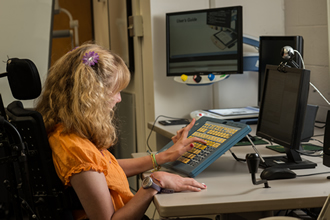KIHd System
Since the early 1990's, the rate of autism has increased exponentially around the world with figures as high as 60 per 10,000. Age at intervention has a direct impact on outcome—typically, the earlier a child is treated, the better the prognosis will be. In recent years there has been a marked increase in the percentage of children who can attend school in a typical classroom. However, a majority of children with autism remain impaired in their ability to communicate and socialize. In an educational setting, it is essential that special teachers are trained to collect behavioral and other student- level data accurately and in a timely fashion to make adequate interventional decisions.
Conventionally, data collection by special educators is accomplished using paper and pencil. This method is time consuming; usually involves non-standardization of data sheets, and often leaves data uncharted. Due to the time consuming nature of the work and a requirement of specialized skills to chart them, the data are generally not converted to a form where they can become an effective tool for assessment, monitoring, and intervention.
The KIHd System collects real time data using the data types of frequency, accuracy, duration, and fluency and instantly charts the data, using any device that has internet access. Parents can also use the system to enter information about their child's behavior at home so that teachers and therapists can have a more complete picture of the child's developmental and learning process.
View the 2007 KIHd System Brochure
View the 2009 ADV KIHd System Flyer
The 2011 ADV KIHd System Flyer will be posted here shortly





